Building an Emergency Fund
What, Why and How
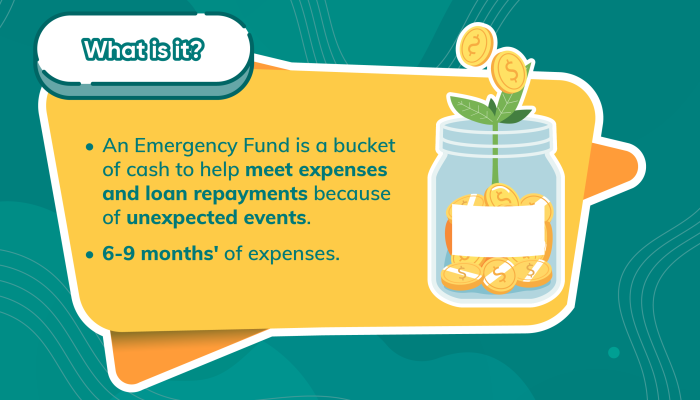
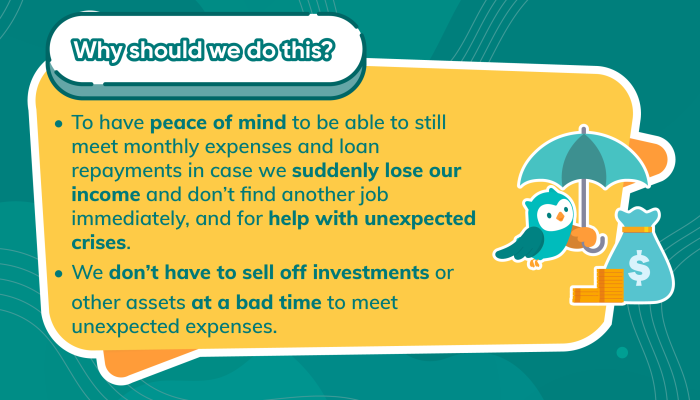
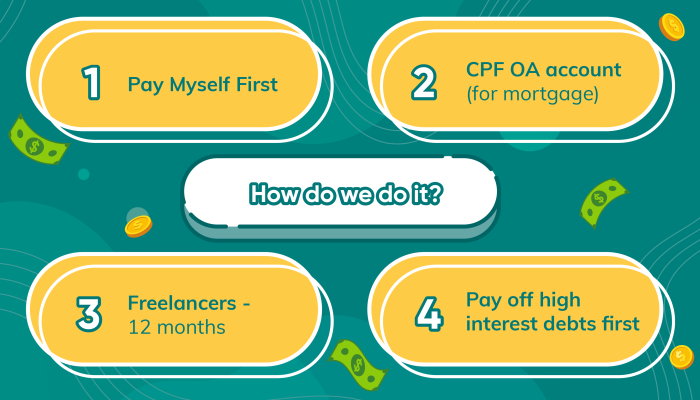
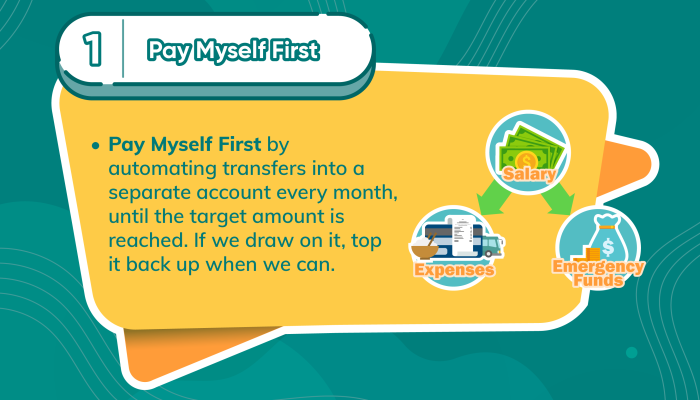
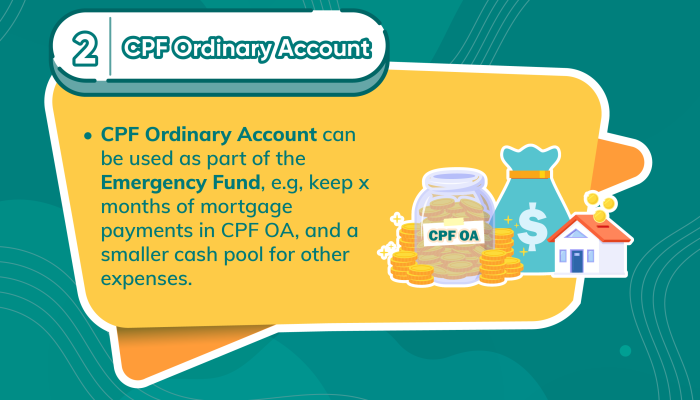
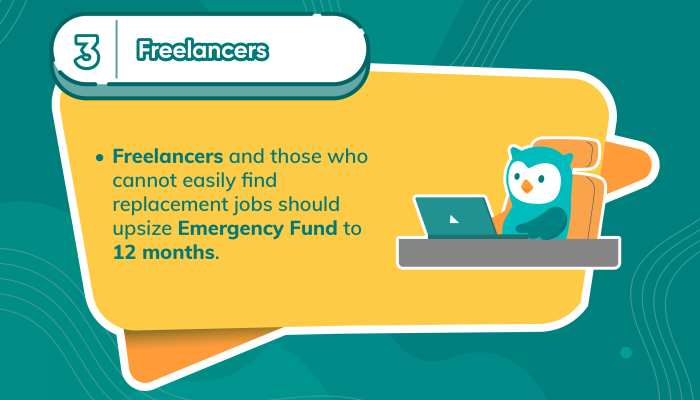
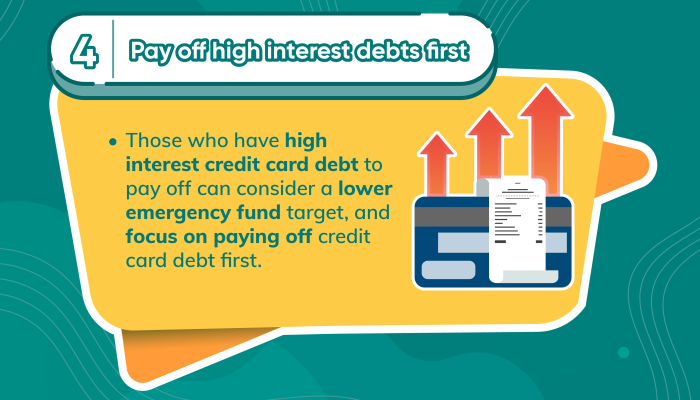
Example
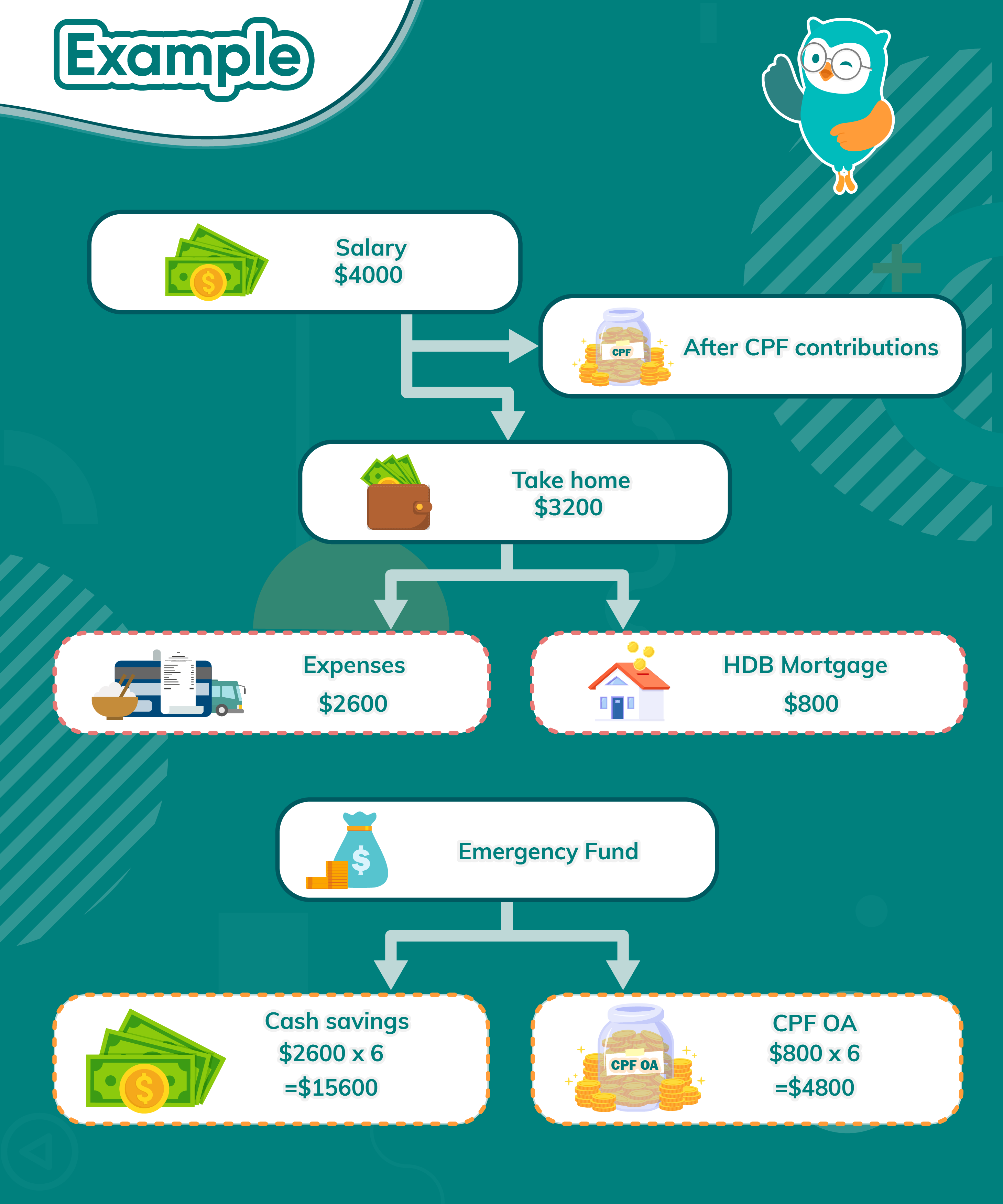
Attention
- Emergency Fund should be kept in very safe and liquid instruments, like cash deposits
- Singapore Savings Bonds are suitable but have up to one month "notice period" for selling. Hence, at least one month of Emergency Fund should always be in a liquid bank account.
